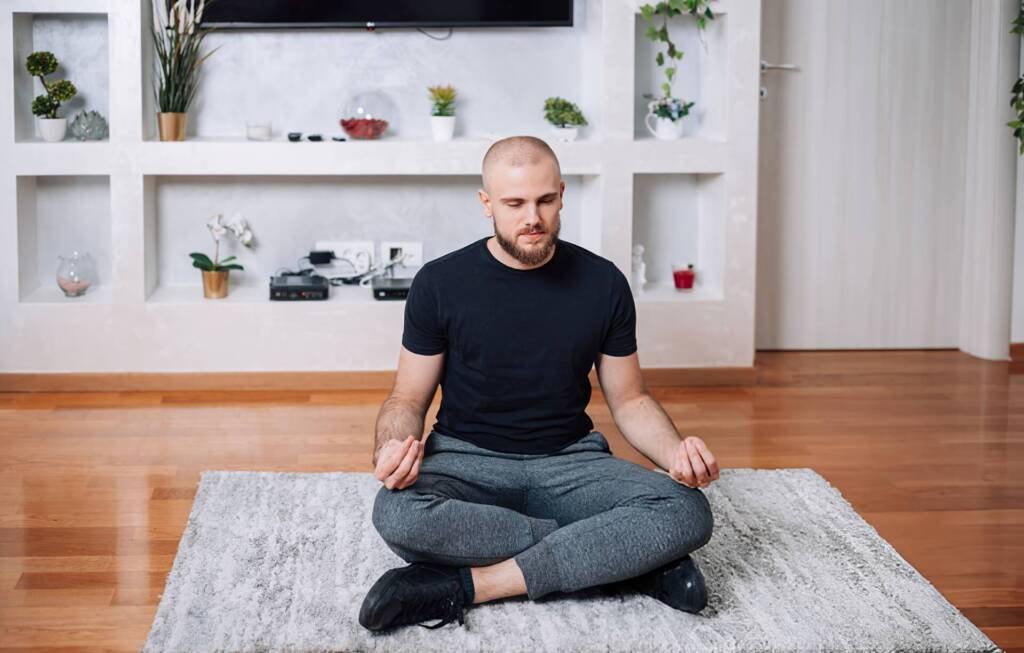Achieving a deep sense of inner peace and self-realization often seems elusive in today’s fast-paced world. However, for yoga enthusiasts and mindfulness seekers, the practice of Samadhi offers a profound pathway to spiritual enlightenment and ultimate tranquility. This blog will guide you through practical steps and effective techniques to help you achieve Samadhi in your yoga practice.
Table of Contents
Yoga is much more than a series of physical postures; it’s a holistic practice that combines physical, mental, and spiritual elements. At its core lies Samadhi, the ultimate state of spiritual absorption and enlightenment. Not only does Samadhi offer a deeper connection with the self, but it also fosters a sense of unity with the universe. This post will provide practical steps and guidance for practitioners seeking to attain Samadhi, enriching their yoga practice and lives.
Grasping the Essence of Samadhi and Its Significance

Samadhi is the eighth and final limb in Patanjali’s Eight Limbs of Yoga, representing the pinnacle of spiritual development and enlightenment. It is a state of intense concentration and spiritual absorption where the mind becomes one with the object of meditation, transcending the limitations of the physical self. This profound state is often described as a union with the divine, where the ego dissolves, and the individual experiences pure consciousness, untainted by the distractions of everyday life.
Achieving Samadhi is considered the ultimate goal of a yogic journey, requiring dedication and mastery of the preceding limbs, such as ethical discipline, physical postures, and breath control. In this state, practitioners feel a deep sense of peace and oneness with the universe, often described as blissful and transformative, providing insight into the nature of existence and the interconnectedness of all things.
The Spiritual and Transformative Benefits

The benefits of reaching Samadhi are both spiritual and transformative. Attaining this elevated state brings immense inner peace, heightened self-awareness, and a profound sense of fulfillment. It is a blissful condition in which the mind transcends its usual limits, merging with a higher consciousness. Those who reach Samadhi often report experiencing a deep connection with the universe and an overwhelming sense of unity with all living things.
The pursuit of Samadhi encourages an ongoing journey of self-discovery, allowing individuals to gain deeper insights into their true nature and purpose. This journey enhances one’s spiritual growth and fosters a more compassionate and harmonious approach to life, inspiring a more meaningful existence.
Samadhi as a Journey
It’s essential to understand that Samadhi is not merely an end goal but a continuous process of growth and self-discovery. Achieving Samadhi involves deep meditation and mindfulness practices that help transcend ordinary consciousness.
Each step taken in pursuing Samadhi contributes to a more profound understanding and connection with oneself and the universe, allowing for greater clarity and spiritual enlightenment. This ongoing journey, filled with personal insights and moments of revelation, is as valuable as the destination itself. It encourages individuals to explore their inner landscapes and develop a sense of harmony with the world around them.
Establishing a Strong Foundation

Developing a Consistent Yoga Practice
Developing a consistent yoga practice is crucial to prepare the body and mind for the profound experience of Samadhi. Regular asana practice helps maintain physical health, flexibility, and balance, which are essential for prolonged meditation sessions. Here are some tips for creating a sustainable yoga routine:
- Set a regular practice schedule, committing to at least 3-5 days a week.
- Incorporate a variety of asanas to keep the practice balanced and engaging.
- Listen to your body and adjust your practice to meet its needs and limits.
Building Mental Resilience
Mental resilience is vital for achieving Samadhi. Enhancing focus and concentration through techniques like pranayama (breathing exercises) can significantly aid in this process. Some effective practices include:
- Nadi Shodhana (Alternate Nostril Breathing) to balance the mind and body.
- Bhramari (Humming Bee Breath) to calm the mind and improve concentration.
- Practicing mindfulness in daily activities to cultivate awareness and presence.
Meditation Practices for Samadhi

Starting with Dhyana (Meditation)
Meditation, or Dhyana, is a precursor to Samadhi. Setting up a dedicated meditation space can enhance your practice and create a conducive environment for spiritual growth.
- Choose a quiet, clutter-free space with minimal distractions.
- Use cushions, mats, or chairs to ensure comfortable seating.
- Incorporate calming elements like candles, incense, or soft music.
Deepening Meditation Techniques
Once you have established an essential meditation practice, you can deepen your concentration through specific techniques. Mantra meditation and visualization are particularly effective:
- Recite a chosen mantra silently or aloud to focus the mind.
- Visualize a peaceful scene or a symbol that holds personal significance.
- Consider participating in silent meditation retreats to intensify your practice and gain deeper insights.
Lifestyle Adjustments for Spiritual Growth

Implementing Yogic Principles in Daily Life
Adopting yogic principles, such as the yamas and niyamas (ethical guidelines), supports spiritual development and aligns with the pursuit of Samadhi. Key practices include:
- Practicing Ahimsa (non-violence) and Satya (truthfulness) in thoughts, words, and actions.
- Maintaining a sattvic (pure) diet comprising fresh, whole foods that nourish the body and mind.
- Cultivating Saucha (cleanliness) and Santosha (contentment) in your daily life.
Balancing Modern Life with Spiritual Aspirations

Integrating yoga and meditation into a busy schedule requires mindful planning and prioritization. Some practical techniques include:
- Setting aside specific times for practice, even if it’s just a few minutes each day.
- Incorporating mini-meditation sessions or mindful breaks throughout the day.
- Prioritizing rest and self-care to maintain balance and prevent burnout.
Overcoming Common Obstacles

Addressing Mental Blockages and Distractions
Mental blockages and distractions are common challenges in the pursuit of Samadhi. Strategies to overcome these obstacles include:
- Identifying and acknowledging distractions without judgment.
- Practicing techniques like mindfulness and journaling to process thoughts and emotions.
- Gradually increasing meditation duration to build focus and resilience.
Understanding and Embracing Setbacks
Setbacks are an inevitable part of any spiritual journey. It’s essential to view these challenges as opportunities for growth and learning:
- Cultivate patience and perseverance by setting realistic expectations and celebrating small victories.
- Reflect on setbacks to identify areas for improvement and personal growth.
- Maintain motivation by revisiting your goals and reminding yourself of the benefits of your practice.
Conclusion

Pursuing Samadhi in your yoga practice is a profoundly personal and evolving journey. By understanding its significance, establishing a solid foundation, incorporating meditation techniques, and making lifestyle adjustments, you can move closer to achieving this ultimate state of spiritual absorption. Remember, the path to Samadhi is not just about reaching a destination but about the continuous process of growth and self-discovery.
We encourage you to embrace these practices and explore their potential for transformation in your yoga journey. For personalized guidance and support, consider joining a community of like-minded practitioners and seeking advice from experienced teachers.
Namaste, and may your path to Samadhi be filled with light and peace.





